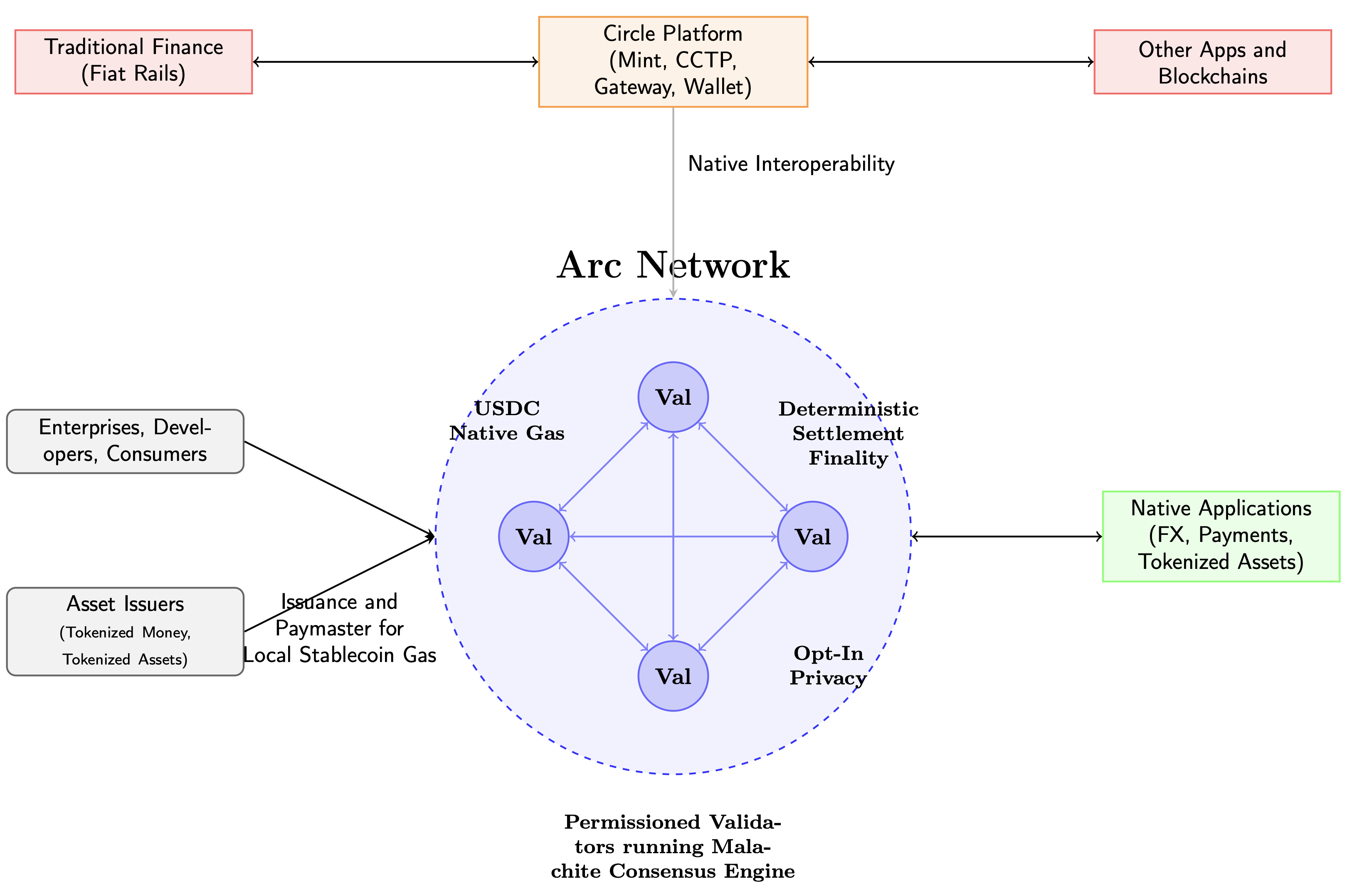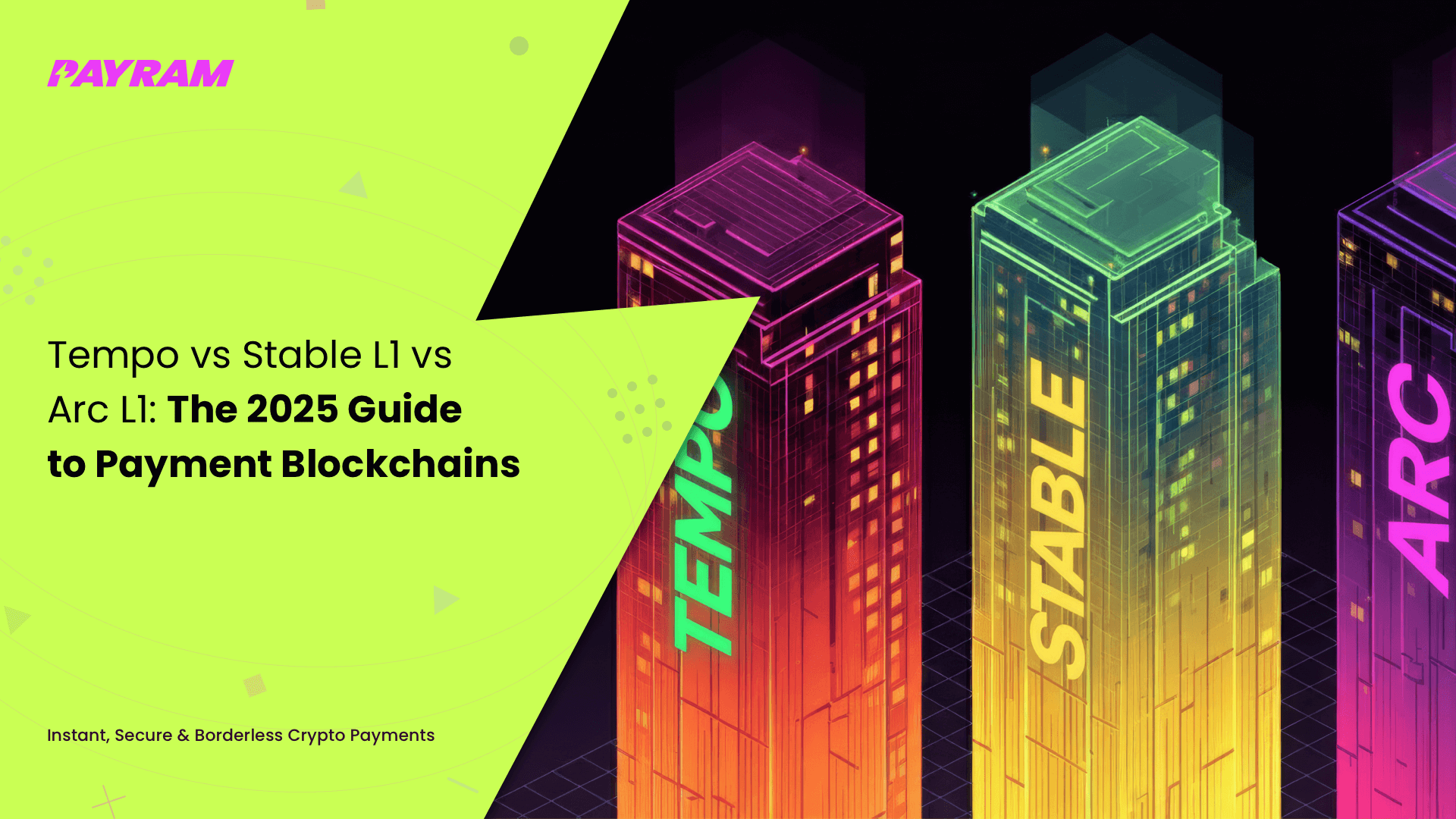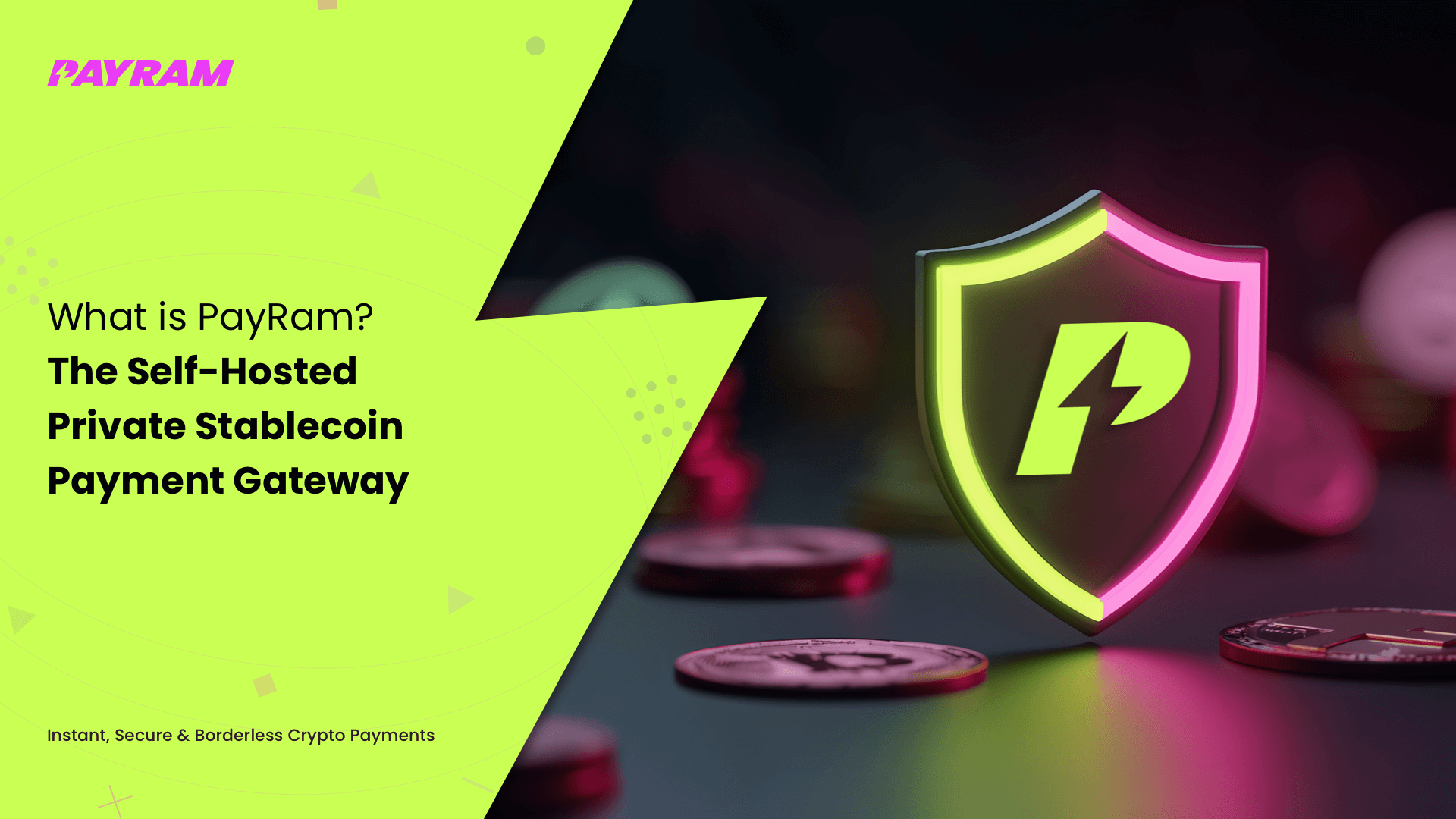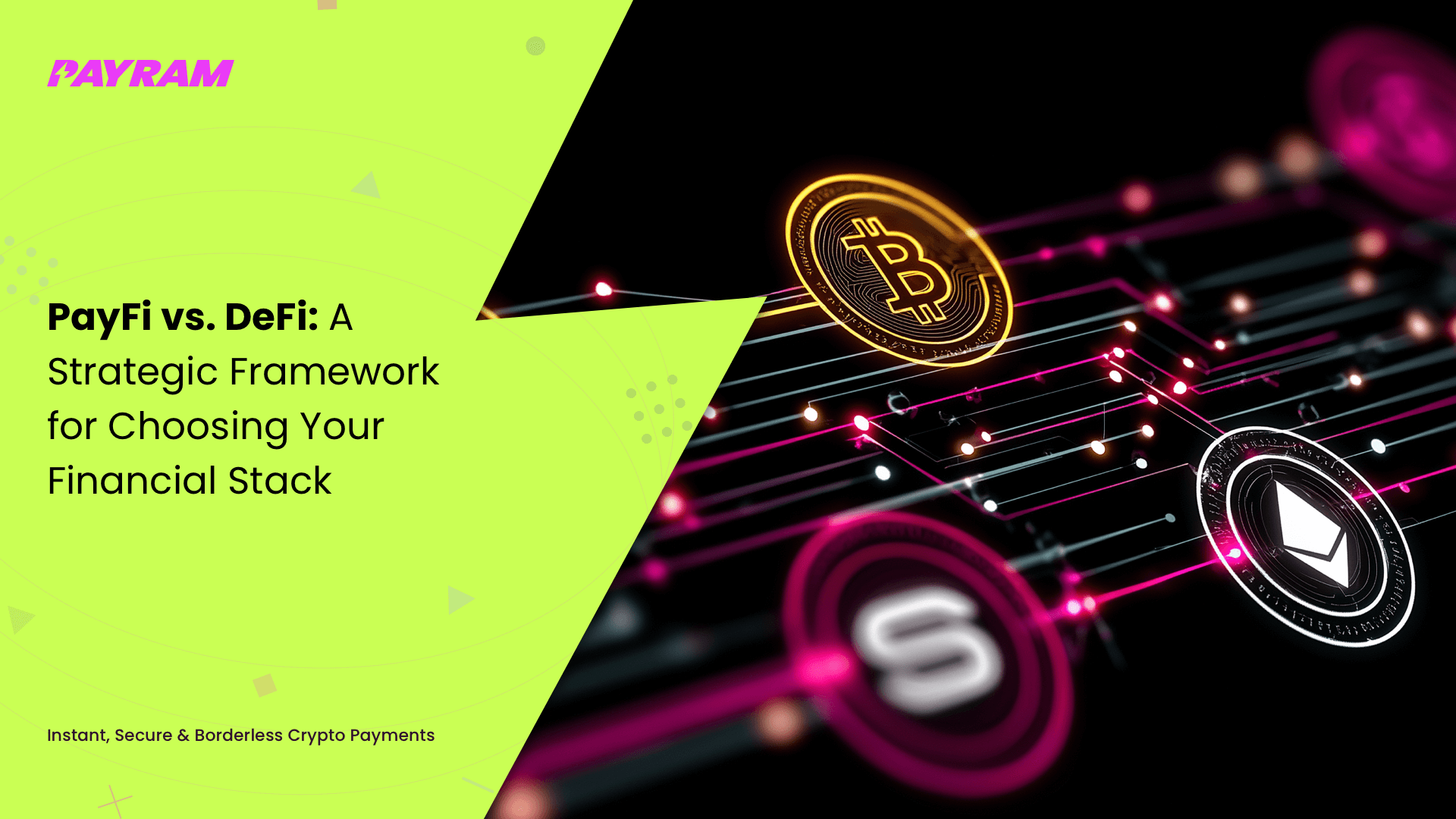The Great Rails Migration: Tempo vs. Stable L1 vs. Arc L1
Your payment stack is leaking value. It’s a slow bleed, a silent drain on your bottom line. For global merchants, the hidden costs of traditional finance are a constant drag, from multi-day settlement delays with SWIFT to foreign exchange fees that can devour 3-5% of a transaction's value. It’s a death by a thousand cuts.
In a desperate dash for efficiency, many businesses turned to public blockchains, hoping to harness the raw power of stablecoins. But this leap often meant trading one set of shackles for another. Volatile gas fees paid in tokens like Ethereum (ETH) or Solana (SOL) make budgeting a nightmare. Uncertain transaction finality creates operational and accounting chaos.
"The global payment landscape, as it exists today, is fundamentally misaligned with the needs of modern, digital-first businesses." - Fintech Weekly
While stablecoin transaction volume has surged past $32 trillion annually, the underlying infrastructure was never purpose-built for enterprise-grade commerce. To solve this, a new class of Layer-1 (L1) blockchains has emerged. These networks are engineered from the ground up specifically for payments, not for speculative trading.
Three titans of finance and technology are leading this charge: Stripe's Tempo, Tether's Stable L1, and Circle's Arc L1. This guide will dissect these three "payment-first" L1s, moving beyond the hype to deliver a strategic analysis of their speed, cost, and core features. The goal is simple: to arm you with the intelligence needed to choose the right foundation for your company's future.
Why a Dedicated Payments L1? The Evolution Beyond General-Purpose Blockchains
Before we dive into the contenders, let's establish why a dedicated payment-first L1 is a revolutionary leap forward. While general-purpose blockchains like Ethereum pioneered smart contracts, they were never designed for the brutal demands of enterprise-grade commerce.
- Recapping the Core Issues: General-purpose L1s are plagued by volatile gas fees, network congestion from non-payment activity like NFT mints, and probabilistic finality, which introduces terrifying settlement uncertainty.
- The Purpose-Built Advantage: Dedicated L1s are the logical next step. They are engineered for financial-grade reliability and predictable costs. They offer features merchants actually need, like compliance hooks and dollar-denominated fees, without the "noisy neighbor" problem of competing with a thousand other applications.
- The Right Tool for the Job: You wouldn't use a family minivan for a Formula 1 race. By the same token, using a general-purpose blockchain for mission-critical, enterprise-grade payments is a strategic mismatch. A dedicated payment rail is designed for one thing: moving value with maximum speed, efficiency, and reliability.
Why Your Current Payment Rails Are Holding You Back
For any global or high-risk business, the limitations of existing payment infrastructure are a constant source of friction and cost. Legacy systems and first-generation blockchains each present a unique set of obstacles to efficient commerce.
Legacy financial rails were designed for a pre-internet world. For merchants operating globally, this means tangible business challenges. Cross-border payments often take multiple days to settle, locking up working capital. Layers of intermediary banks and processors result in high fees, particularly for currency conversion, which routinely erode profit margins.
A staggering 97% of businesses report challenges with cross-border payments, citing high costs and slow speeds as top concerns, according to a 2024 report by the World Bank.
General-purpose L1 blockchains were seen as the solution, but they created a new set of problems:
- Volatile Gas Fees: Transaction costs are paid in volatile cryptocurrencies. This price volatility makes it impossible for merchants to predict or budget for payment processing costs, which can spike dramatically during network congestion.
- Probabilistic Finality: Commerce demands settlement certainty. Blockchains like Ethereum offer probabilistic finality, meaning a transaction is only considered truly final after a period, which can be around 13 minutes. This window of uncertainty is untenable for merchants who need to ship goods immediately.
- Network Congestion: A merchant's payment is competing for blockspace with everything from NFT mints to DeFi trading. This "noisy neighbor" problem creates an unreliable environment for mission-critical business payments.
The New Contenders: A Deep Dive into Payment-First L1s
In response to these challenges, a new architectural paradigm has emerged: the payment-first L1. These networks are not general-purpose supercomputers but highly specialized financial rails, each with a distinct approach to solving the core problems of speed, cost, and reliability for merchants.
Tempo L1: The Distribution Powerhouse (Backed by Stripe & Paradigm)
Tempo is a purpose-built blockchain for high-throughput, low-latency stablecoin payments, born directly from Stripe's vast experience with the real-world needs of global merchants.
- Performance Metrics: The network is engineered for massive scale, claiming the capacity for over 100,000 transactions per second (TPS) with sub-second, deterministic finality. This is designed to meet the demands of a global processor like Stripe, which handles peak loads exceeding 10,000 TPS.
- Key Feature - Stablecoin Gas via "Enshrined AMM": Tempo's killer feature for merchants is its approach to transaction fees. Businesses can pay for transactions using any supported stablecoin, like USDC. A protocol-native Automated Market Maker (AMM) seamlessly converts the payment stablecoin into the required fee currency on the backend. This abstracts away the complexity of holding a separate, volatile gas token and makes transaction costs predictable and dollar-denominated.
- Strategic Differentiator - "Agentic Payments": Looking to the future, Tempo is designed with AI leaders like OpenAI to support automated financial workflows. This "agentic payments" capability enables use cases like programmable payroll or AI agents conducting microtransactions, positioning Tempo as a forward-looking infrastructure.
- Ecosystem & Go-to-Market: Tempo's most formidable advantage is its backing. The platform was developed with input from global leaders including Visa, Deutsche Bank, Shopify, and Revolut. This built-in network, combined with Stripe's access to millions of merchants, creates an unparalleled go-to-market strategy.
Stable L1: The Liquidity King (Backed by Tether & Bitfinex)
Stable L1 is a dedicated "stablechain" engineered to leverage the deep liquidity and widespread adoption of Tether (USDT), the world's dominant stablecoin with a circulating supply exceeding $150 billion.
- Performance Metrics: The network is designed for high performance, promising sub-second block finality and high throughput. It aims to keep transaction fees consistently under one cent.
- Key Feature - USDT Native Gas: In contrast to Tempo's conversion model, Stable L1 uses USDT as its native token for all network fees. This simplifies the user experience entirely, as merchants and consumers only need to hold Tether (USDT) to transact.
- Strategic Differentiator - Gas-Free USDT0 Transfers: Stable L1 integrates with USDT0, a decentralized version of Tether that enables gas-free peer-to-peer transfers. This feature is designed to reduce friction for high-volume use cases like remittances and micropayments.
- Enterprise & Compliance Features: The platform is built with institutional requirements in mind. It offers features like guaranteed blockspace allocation, allowing large enterprises to reserve network capacity for predictable performance. It also provides for batch transaction processing and confidential transfer mechanisms.
Arc L1: The Compliance Fortress (Backed by Circle)
Arc L1 is an open blockchain purpose-built for "stablecoin finance," specifically targeting regulated institutions, banks, and enterprises that prioritize compliance and security above all else.
- Performance Metrics: Arc achieves sub-second, deterministic finality through its "Malachite" consensus engine, a high-performance Byzantine Fault Tolerant (BFT) system. This provides absolute and immediate settlement certainty.
- Key Feature - USDC Native Gas & Built-in FX: Similar to Stable L1, Arc uses its native stablecoin, USDC, for gas fees. Its unique feature is a built-in, institutional-grade Request-for-Quote (RFQ) foreign exchange engine. This allows for on-chain, atomic swaps between different stablecoins, such as USDC for EURC.
- Strategic Differentiator - Compliance & Privacy: Arc's architecture is compliance-first. It launches with a permissioned set of known, reputable institutional validators. It also offers opt-in privacy, allowing businesses to shield transaction details from the public while providing "view keys" to authorized auditors or regulators. Circle is also exploring reversible transactions to aid in fraud recovery—a feature that directly appeals to traditional financial institutions.
- Ecosystem & Go-to-Market: Arc's strategy is to leverage Circle's deep relationships within the regulated financial industry. A key partnership with digital asset custody firm Fireblocks provides a direct on-ramp for over 2,400 banks and asset managers to access the Arc network.

The Ultimate Merchant Showdown: A Head-to-Head Comparison
To clarify the distinct value propositions of these emerging networks, the following table provides a direct comparison across key features relevant to merchants and businesses. The comparison makes one thing clear: these three platforms are taking very different strategic approaches.
The Verdict: Which L1 Is Right for Your Business?
The choice between these powerful new L1s is not a matter of which technology is superior in a vacuum, but which platform is the best strategic fit for your business model and risk tolerance.
For the Global E-commerce Platform or Marketplace: Tempo
Tempo emerges as the probable frontrunner for large-scale e-commerce operations. Its ability to handle over 100,000 TPS and its stablecoin-agnostic gas model provide the flexibility necessary to support a wide array of customers without imposing a specific token requirement.
For the iGaming Operator or Business in Emerging Markets: Stable L1
Stable L1 presents a highly compelling case for businesses in markets where USDT liquidity is dominant, such as iGaming and many emerging economies. The unmatched global liquidity of USDT, combined with the potential for gas-free P2P transfers, offers a powerful combination of reach and cost-efficiency.
For the Regulated FinTech or B2B Payments Provider: Arc L1
Arc L1 is the unambiguous choice for businesses operating within the traditional financial system. Its compliance-first architecture, featuring a permissioned set of institutional validators and features like opt-in privacy, provides the necessary trust and regulatory safeguards.
Navigating the New Rails: How PayRam Gives You an Edge
Choosing the right L1 is only half the battle. The real challenge is integrating this powerful new technology into your business without adding complexity. This is where a self-hosted crypto payment gateway like PayRam becomes your unfair advantage.
PayRam is designed to abstract away the complexity of the underlying rails, giving you the power of next-generation payments through a single, streamlined interface.
"The future of payments isn't about choosing one chain. It's about having a single, intelligent layer that can route transactions across any chain for optimal speed, cost, and reliability." - Alex Thornton
While the L1s provide the raw infrastructure, PayRam provides the intelligence and control. Here’s how we’re different:
- Zero Processing Fees: We believe in transparent pricing. PayRam has 0% processing fees. Instead, we charge for advanced, value-add services like the orchestration and sweeping of funds from deposit addresses to your main wallet. These service fees can go up to 5%, depending on the services you use.
- Effortless Setup: Forget command lines and manual file editing. PayRam’s installation and configuration are handled through a streamlined, user-friendly interface. This UI-based setup makes our platform accessible to a much broader range of users, letting you get up and running in minutes, not weeks.
- Complete Financial Sovereignty: With PayRam, you are always in control. Our self-hosted, non-custodial model means you hold your own keys. Your crypto is your crypto. This is the ultimate defense against de-platforming and censorship.
- Seamless Fiat Conversion: Need to move back to fiat? PayRam offers integrated Off-Ramp, giving you a complete, end-to-end solution for managing both digital and traditional currency.
Frequently Asked Questions (FAQs)
1. What is a Layer-1 (L1) blockchain and why does it matter for payments?
A Layer-1 blockchain is the fundamental, base-level network, like Bitcoin or Ethereum. For payments, a new generation of L1s like Tempo, Stable L1, and Arc are being built specifically for high speed and low cost, unlike older chains that were not optimized for the demands of global commerce. This means faster settlement, predictable fees, and greater reliability for your business.
2. How are these new payment L1s different from Bitcoin or Ethereum?
The key difference is specialization. Bitcoin and Ethereum are general-purpose networks that support thousands of different applications, which can lead to congestion and high, volatile fees. These new L1s are purpose-built only for payments. They prioritize features like sub-second finality and stablecoin gas fees to create a superior experience for merchants.
3. What does "deterministic finality" mean for my business?
Deterministic finality means that once a transaction is confirmed on the blockchain (which for these L1s takes less than a second), it is 100% final and irreversible. This eliminates the risk and uncertainty of "probabilistic" finality found on chains like Ethereum, where you have to wait several minutes for a transaction to be considered truly settled. For a merchant, this means you can ship goods or provide services instantly with absolute confidence the payment is complete.
4. Are stablecoin payments safe for my business?
Yes, when managed correctly. Major stablecoins like USDC and USDT are backed by reserves of real-world assets. The primary risks in the crypto space come from volatility and custody. By using a Self hosted cryptocurrency payment processor you eliminate custodial risk by always controlling your own funds. Furthermore, using stablecoins eliminates the price volatility associated with cryptocurrencies like Bitcoin (BTC).
5. How does PayRam's 0% processing fee model work?
We don't take a percentage of your transactions. Our business model is based on providing powerful, optional services that help you manage your funds more efficiently. We charge modest, transparent fees for advanced features like automated fund sweeping and orchestration, which can be as high as 5%. Basic payment acceptance has no processing fee from us.
6. What are orchestration and sweeping services?
Orchestration involves creating intelligent rules to manage your incoming payments, such as automatically converting a portion of your revenue during market crashes to stablecoins to avoid volatility. Sweeping is the automated process of consolidating funds from many individual deposit addresses into your main corporate wallet, which simplifies treasury management and enhances security.
7. Is PayRam difficult to set up for someone who isn't a developer?
Not at all. We designed PayRam to be incredibly accessible. Unlike many crypto solutions that require command-line expertise, PayRam features a streamlined, UI-based setup process. You can get your gateway installed and configured through a user-friendly interface, making it easy for anyone to get started.
8. Can I convert my crypto back to fiat currency using PayRam?
Yes. We understand that businesses need to operate in both the digital and traditional financial worlds. PayRam offers integrated Off-Ramp, allowing you to seamlessly convert your cryptocurrency into fiat and withdraw it to your bank account, providing a complete, end-to-end payment solution.
9. Which L1 is best for my specific industry, like iGaming or e-commerce?
For iGaming or operations in emerging markets, Stable L1's deep USDT liquidity is a major advantage. For global e-commerce platforms, Tempo's stablecoin-agnostic approach and massive TPS are ideal. For regulated fintechs, Arc L1's compliance-first design is the clear winner. PayRam allows you to harness the power of any of these, tailored to your needs.
10. How does PayRam help my business navigate compliance?
PayRam provides the tools you need to build a robust compliance framework. Our self-hosted nature gives you full control over your data and transaction flows. We also offer features that align with regulations like the FATF (Travel Rule) and provide resources for navigating complex rulebooks like Europe's MiCA regulations.
Conclusion
The era of relying on general-purpose blockchains for enterprise-grade payments is drawing to a close. A new wave of specialized, payment-first L1s—Tempo, Stable L1, and Arc L1—has arrived, each presenting a distinct and powerful vision for the future of global commerce. Their common foundation of high throughput, low costs, and deterministic finality represents a fundamental upgrade over both legacy financial rails and their blockchain predecessors.
Ultimately, the decision of which new rail to adopt is a strategic one. The choice is between leveraging the unparalleled distribution of Stripe's network with Tempo, tapping into the deep liquidity of the Tether ecosystem with Stable L1, or building on the compliance-focused foundation of Circle's Arc L1. The great rails migration has begun, and choosing the right foundational partner today will determine how efficiently your business can move value globally for the next decade.


.svg)










.svg)